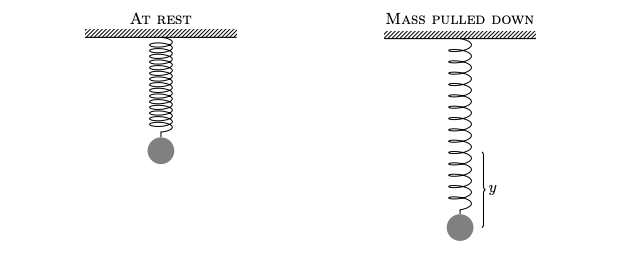(vertical) velocity v(t) (relative to its equilibrium position) and the mass’s (vertical) acceleration a(t) (relative to its equilibrium position). (b) Is the mass moving toward the ceiling or toward the floor at t = π
Gravitational force
In nature, every object is attracted by every other object. This phenomenon is called gravity. The force associated with gravity is called gravitational force. The gravitational force is the weakest force that exists in nature. The gravitational force is always attractive.
Acceleration Due to Gravity
In fundamental physics, gravity or gravitational force is the universal attractive force acting between all the matters that exist or exhibit. It is the weakest known force. Therefore no internal changes in an object occurs due to this force. On the other hand, it has control over the trajectories of bodies in the solar system and in the universe due to its vast scope and universal action. The free fall of objects on Earth and the motions of celestial bodies, according to Newton, are both determined by the same force. It was Newton who put forward that the moon is held by a strong attractive force exerted by the Earth which makes it revolve in a straight line. He was sure that this force is similar to the downward force which Earth exerts on all the objects on it.
A 1kg mass is attached to a spring (with spring constant k = 4 N/m), and the spring itself is attached to the ceiling. If you pull the mass down to stretch the spring past its equilibrium position, when you release the mass and observe its (vertical) position, it’s said to undergo
Under certain initial conditions, the mass’s vertical position (in metres) relative to its equilibrium position at time t, y(t), can be modelled by the equation
y(t) = cos(2t) − sin(2t),
(Note that y measures how much the spring has been stretched, so y = 1 indicates the mass is 1m below its equilibrium position, whereas y = −1 indicates it is 1m above its equilibrium position.)
(a) Find expressions for the mass’s (vertical) velocity v(t) (relative to its equilibrium position) and the mass’s (vertical) acceleration a(t) (relative to its equilibrium position).
(b) Is the mass moving toward the ceiling or toward the floor at t = π? Justify your answer with a calculation.
(c) At what time(s) in the first 2 seconds is the mass momentarily stationary?

Trending now
This is a popular solution!
Step by step
Solved in 3 steps with 3 images


